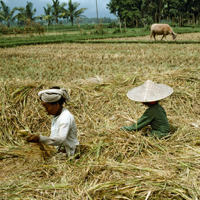Thirty years of globalization has propelled widespread economic growth across Southeast Asia. In recent decades, the number of people in the region living on less than $1.25 a day has dropped by half. Yet, these positive development trends are accompanied by a darker side of globalization: trafficking in drugs and small arms, piracy, human smuggling, the marketing of counterfeit goods and nuclear proliferation. The size and scope of these challenges threaten to undercut the remarkable gains of the past quarter-century. Preserving those gains will require collaboration between Southeast Asian governments, the identification of novel streams of security and development assistance and productive engagement with the private sector.
As we have argued previously with regard to East Africa, the aid necessary in times of global financial austerity is "dual-benefit" assistance: support that can help combat mounting security challenges while simultaneously furthering development needs. This assistance can be garnered from various "hard security" aid channels. For example, U.N. Security Council Resolutions 1373 and 1540, as well as broader nonproliferation initiatives, such as the G-8 Global Partnership to Combat the Spread of Weapons of Mass Destruction, are logical platforms on which to base this new model of engagement. This approach will ensure recipient buy-in and an enduring return on donor investments. Indeed, the model has already been successful in the Caribbean and Central America. Promising efforts are also underway in East Africa (.pdf).
By employing existing synergies between security threats and development needs, governments and private industry can do well by doing good.

